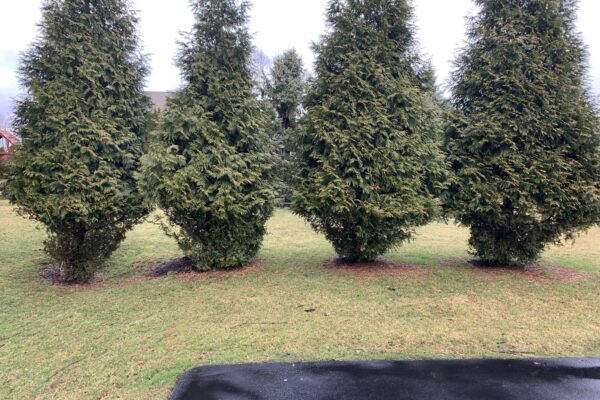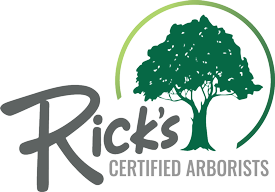Integrated Pest Management
Our approach to insect and disease management is to assess each homeowner’s unique property and develop a plan based on the size of the property, the number of trees and shrubs, and other factors. As ISA Certified Arborists, our Tree Care Experts are trained to know what types of pests and diseases are common in this area and what types of insects and diseases are a threat to the particular species of trees and shrubs on a property.
At Rick’s Certified Arborists, our Tree Doctors know the life cycle and habits of the most common insects and pests and can help you plan a proactive strategy to protect your trees and shrubs before they become a target. This comprehensive approach saves you money by creating a treatment plan designed to prevent infestations and disease rather than treating the trees and shrubs after these issues have become a problem.
Common Tree and Shrub Diseases
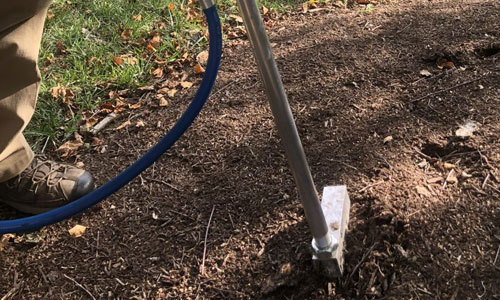
Fungal Foliar Diseases
Fungal foliar diseases, such as Anthracnose, Needlecast, and Cedar Rust, pose significant threats to tree health by infecting the leaves and reducing the plant’s ability to photosynthesize effectively. These diseases manifest as discolored spots, distorted growth, and premature leaf drop, which can weaken trees and make them more susceptible to other stresses.
Rick’s Certified Arborists are experts in identifying and managing these fungal issues. By employing targeted fungicidal treatments and recommending cultural practices to improve air circulation around the trees, our arborists help preserve the beauty and health of your foliage, ensuring your trees remain vigorous and attractive.
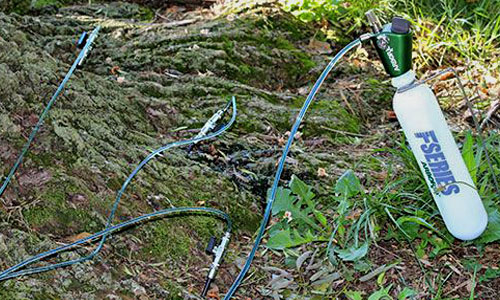
Root Rot
Root Rot is a severe condition that can affect trees, often exacerbated by poor drainage or overwatering, leading to the decay of root systems. This disease makes trees unstable and limits their ability to absorb nutrients and water, significantly reducing their overall health and longevity. Symptoms include soft, brown roots, stunted growth, and a general decline in health.
At Rick’s Certified Arborists, we prioritize the prevention and treatment of Root Rot by improving soil conditions and drainage, thus ensuring the robustness of your trees’ foundational support system. Our arborists are skilled in detecting early signs of this disease and can implement effective solutions to protect your trees.
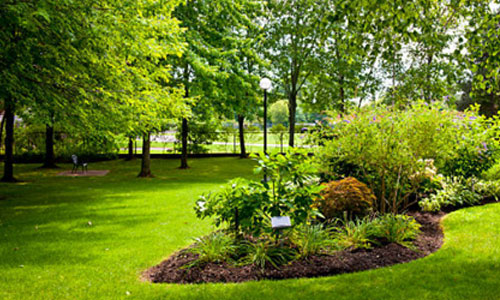
Vascular Diseases
Vascular diseases like Bacterial Leaf Scorch, Bleeding Canker and Dutch Elm Disease impact the tree’s vascular system, blocking the flow of water and nutrients within the plant. These diseases can cause rapid and often irreversible damage, leading to wilting, dieback, and eventually, the death of the tree. Vascular diseases require prompt and aggressive management, which Rick’s Certified Arborists provides through accurate diagnosis and appropriate treatment plans.
Our team uses integrated management strategies, including the removal of infected parts, to prevent the spread of disease, combined with chemical treatments to protect healthy trees. By addressing these vascular issues, we help maintain the vitality and longevity of your treasured trees, safeguarding your landscape’s health and aesthetic appeal.
Insects That Can Harm Your Greenery
In addition to the traditional pests we’re all familiar with, there are many other insects that can threaten the health of your trees and shrubs that could be going unnoticed. From the sap sucking Scale insects to the subtle yet destructive Bronze Birch Borer, these pests disrupt the health and well-being of our most prized trees. Some insects, like the Bagworm, specialize in targeting specific hosts, causing permanent damage for certain tree and bush species. As such, understanding the species that grow in your landscaping can help you better protect them from insects that eat them.
How to Safeguard Your Trees From Insects and Diseases
Water Them Regularly
Water helps protect our trees and bushes against the onslaught of diseases and insects. Regular watering — especially during dry spells — ensures roots have access to clean water, which is essential for the uptake of nutrients and overall health.
By maintaining a well-hydrated landscape, we help our plants resist the stresses that make them vulnerable to pest issues and diseases. It’s a simple act that can make a significant difference in the vitality of our outdoor trees and shrubs, offering them a fighting chance against an array of problems.
Keep an Eye on Them
Monitoring our trees and bushes serves as a critical line of defense against the encroachment of diseases and insects. By keeping a watchful eye on the early signs of distress — such as unusual leaf discoloration or the appearance of Scale Insects on the tree trunk — we can act quickly to mitigate new infestations.
Scheduling regular inspections, particularly as the seasons change, allows us to catch these issues before they have a chance to escalate. This proactive approach can spare our landscape plants from the fate of decline and preserve the lush beauty of our lawns and gardens for seasons to come.
Deep Root Feeding
Deep root feeding is an essential technique used by Rick’s Certified Arborists to enhance the health and resilience of your trees against insects and diseases. This process involves injecting nutrients directly into the soil around the tree’s root zone, which ensures that the nutrients are more readily available to the tree than surface feeding. By strengthening the tree from the roots up, deep root feeding promotes vigorous growth and improves the tree’s natural defenses. Healthier trees are better equipped to resist infections and infestations, reducing the need for chemical treatments and helping to maintain a natural balance within your landscape.
Proper Mulching
Proper mulching is another critical practice recommended by Rick’s Certified Arborists to protect your trees from various stresses, including pests and diseases. Mulch helps to regulate soil temperature, retain moisture, and suppress weed growth, creating a more controlled and beneficial environment for tree roots. When applied correctly, mulch can also prevent soil compaction and reduce the likelihood of root exposure to fungal spores and insects residing in the soil. By maintaining a healthy root environment, mulching not only supports robust tree growth but also enhances the tree’s ability to ward off diseases and pests naturally.
Call Our Professionals
When the challenges of maintaining healthy trees and bushes exceed the bounds of routine care, reaching out to our professional Arborists for Insect and Disease Control is the best decision. The experts at Rick’s Certified Arborists are armed with their knowledge of pest behavior and disease management and can provide targeted interventions for specific problems. By contacting our team, you can guarantee that your outdoor spaces are not only protected from diseases and pests, but looking their best.
Call Rick’s Plant Health Care Today | 610-840-2655
When the trees and shrubs on your property don’t look right, reach out to our team today. We will schedule a time to walk your property with our Certified Arborist and ensure your landscape stays healthy and beautiful all year long. Our tree disease control services are available in Delaware County, Chester County, Montgomery County, and surrounding areas.
Frequently Asked Questions About Tree Insect & Disease Control
Signs of Emerald Ash Borer damage include crown dieback, epicormic sprouting (new growth along the main limbs and lower trunk), bark splitting, and D-shaped exit holes. It’s also common to see woodpecker holes on the tree trunk, as they peck holes into the tree to eat the Ash Borer larvae.
The most effective way to eliminate Emerald Ash Borers is through trunk injections. These applications offer two years of protection from Ash Borers and because the pesticide penetrates the vascular tissue of the tree, it provides more consistent results than any other method.
Yes, ash trees can survive Ash Borers, but only when they are treated in the early stages of infestation. Typically, by the time a tree begins to show visual signs of damage and infestation, it is too late to save it.
Spotted Lanternfies feed on the sap of leaves, stems, and trunks of trees and other plants. When they feed, they leave wounds behind that weep sap; the Lanternflies themselves secrete a sticky substance called honeydew that covers trees and attracts black sooty mold. Trees are left compromised and susceptible to other pests and diseases.
The Spotted Lanternfly prefers the Ailanthus Tree, or Tree of Heaven, but they will migrate to other species in areas that are highly affected by Lanternfly infestations. Other trees that are popular with Spotted Lanternflies include Willows, Silver Maples, Red Maples, Crimson Maples and Birch trees.
Trees display a black sut down the trunk of the tree which is secretions from SLF. That same sut can also ruin your deck, patio and furniture along with items surrounding the infected trees.
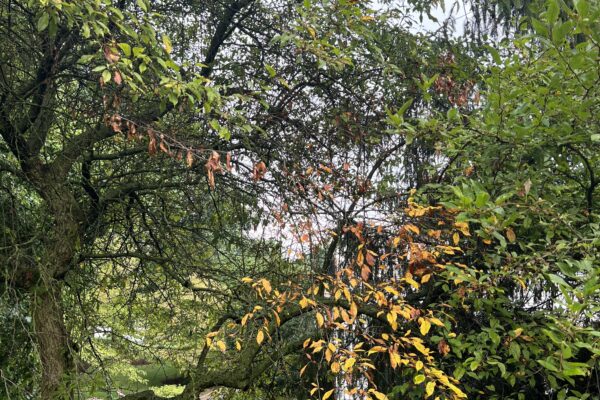
Can a Pear Tree Recover From Fire Blight?
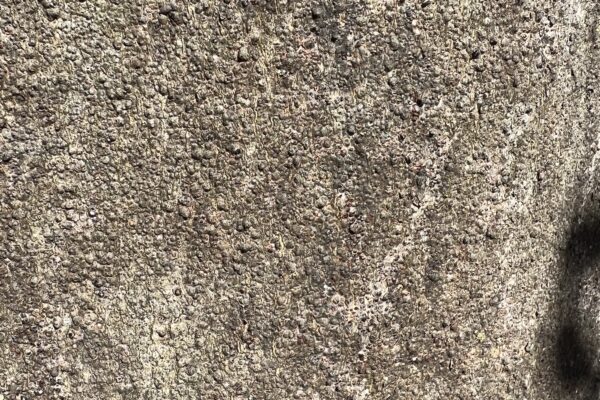
Will Gloomy Scale Kill My Maple Tree?
Tree Leaf Discoloration: What Does Each Color Mean?
Symptoms of Dying Trees: Leaves, Bark, Soil & More
